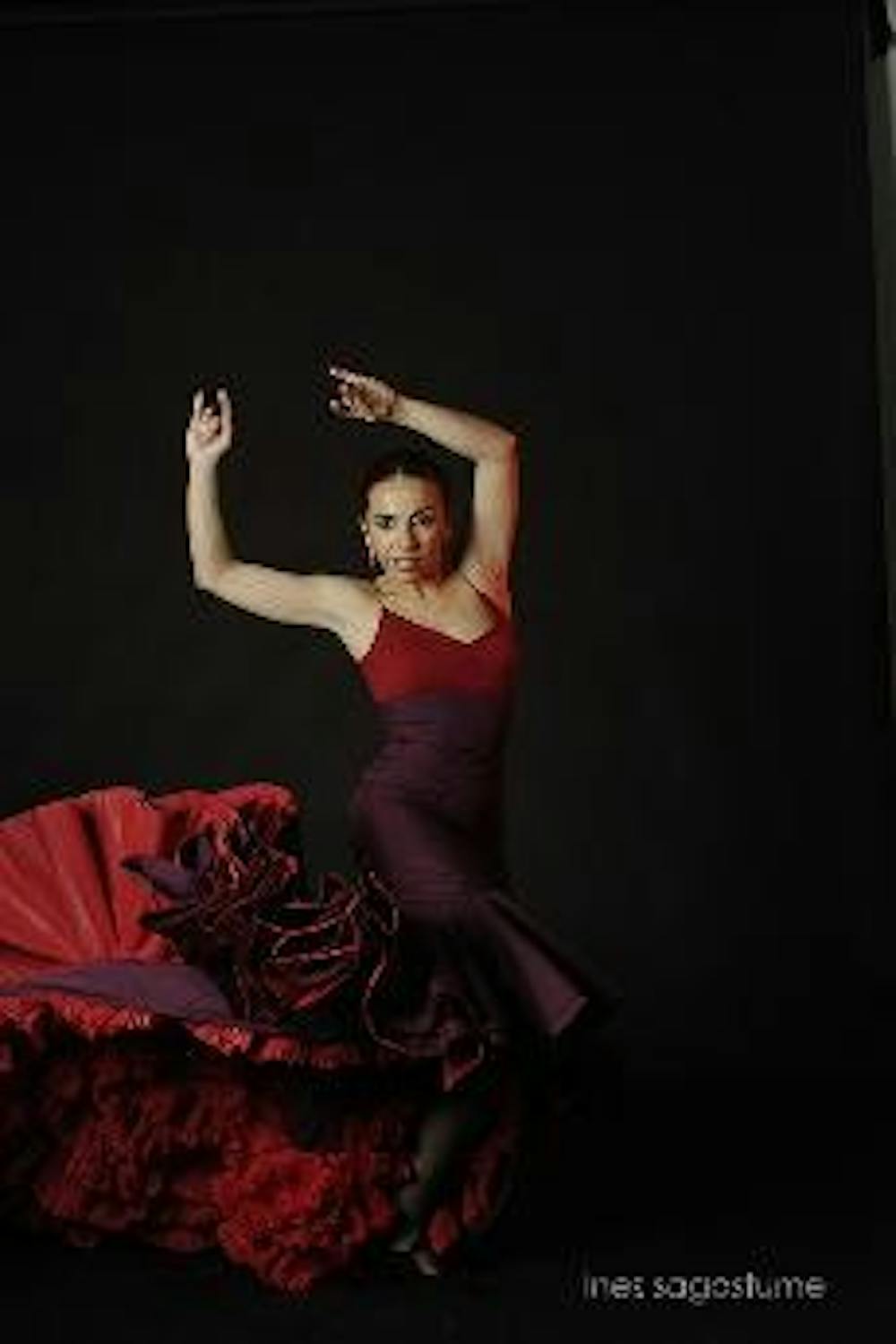When the roads are icy and the weather is cold, some people opt for a good book and hot chocolate, while others prefer a fire and a game of Monopoly. Others go to see world class flamenco dancing.
Last Tuesday, the George Washington University Lisner Auditorium presented "Gala 2007: Bienal de Sevilla." This flamenco dance event was the second night of the seventh annual flamenco festival, which ran from Feb. 9 to 17 and featured many flamenco varieties. Despite the nasty weather, the Lisner was near-filled with an eager audience.
The performance featured two celebrated flamenco dancers, Joaqu¡n Grilo and Isabel Bay¢n, who both portray flamenco directly from its origins and have no problem mesmerizing an audience. Other dancers La Moneta, Manual Li¤án, Olga Pericet and Marco Flores all made their U.S. debuts. They were warmly welcomed by the rambunctious audience, which applauded and sometimes even hollered in appreciation of the dancers.
The first dancers' speed, grace, consistency and footwork were incredible. Pericet, Li¤án and Flores all seemed to dance as one. Each arm moved at the same time and each foot hit the floor simultaneously, creating the same beat. They stared straight at the audience while rapidly moving their feet, never missing a beat.
The women wore elaborate dresses with long trains that dragged along the floor each time they took a step. They were the kind of dresses most women would have trouble walking in, let alone dancing in. The dancers would hold the trains up as if to prove that their feet were actually moving and to show off the beautiful inside of the flowing red and white train.
There were 12 musicians: six before intermission and six after. The music during the first act was mainly stringed instruments, coupled with voices that echoed throughout the auditorium. During the second act, there were more drums, which allowed the dancers to move looser than the traditional flamenco.
The musicians would holler Spanish phrases at the dancers throughout the performance and the Spanish-speaking audience members quickly joined in. By the end of the performance, people were hooting and hollering from all different corners of the auditorium.
To end the evening, the dancers and the musicians appeared to have a dance off. When the long-haired, bearded singer Leo Trivi¤o and Grilo stomped across the stage toward each other with huge grins on their faces, they proved to the audience that their trek through the snow was worth it.
Flamenco is often perceived as a rigid and technical style of dance. However, a good flamenco dancer, like the dancers on Tuesday, can find that happy medium between grace and stiffness. Truly skilled dancers can make their movement as dramatic as when they stand still, just as these flamenco dancers demonstrated.
-DANIELLE LOWE
On a cold evening last week, event organizers set up a bar in the lobby of the Lisner Auditorium to set the mood. It was there patrons mingled and hugged as they sipped red wine. It seemed as though every Spaniard in the District had come to see his or her countryman Paco de Lucia, the famed flamenco guitarist.
Born 1947 in Algeciras, Spain, de Lucia quickly mastered the guitar, the principal instrument of the flamenco tradition indigenous to the Andalucia region. At age 11, he broadcast his first performance on Radio Algeciras. Soon after, he formed the flamenco band Los Chiquitos de Algeciras with his brother, Pepe de Lucia.
After winning a prize at the International Flamenco Contest in Jerez in 1962, the Jose Greco Company asked de Lucia to go on tour around Spain. Then, he began composing and recording. Although de Lucia produced songs that were true to the traditional rhythms of flamenco, in which the principal musical elements were the guitar, voice and hand clapping, he also introduced the cajon.
Cajon, which means "box" in Spanish, is a rectangular drum associated with the music of the slaves from Western and Central Africa. Known mainly as a staple of the Afro-Caribbean rumba musical traditions of Cuba and Peru, it added a more percussive element to the flamenco sound.
Invited by the Embassy of Spain and the annual D.C. Flamenco Festival, de Lucia warmed the audience's heart at George Washington University's Lisner Auditorium. When he took the stage, several audience members stood up to pay their respects.
While the show did not include any of the famous songs that de Lucia recorded with rock artists like Bryan Adams, including "Have You Ever Loved a Woman," or the jazz-inspired pieces that he composed in collaboration with Al DiMeola and John McLaughlin, it did highlight his tremendous musical skill.
De Lucia took a seat in the center of the stage. Bathed in red light, the entire auditorium fell silent. As de Lucia played the first solo, people held hands, closed their eyes and swayed their bodies to the rhythm. Then, the rest of the band came on stage, and the show got really exciting.
Although flamenco is akin to folk music for Spaniards, the songs are not melancholy in mood. Those who like to dance would have been pleased with the second set that consisted of feisty alegrias ("alegria" in Spanish means "happiness") and sultry tangos.
As the raspy voices of singers Conchi Heredia and Monserrat Cortes scratched the air, Jose's hands moved in an undulating motion that quickened until the crowd cheered and joined the band by tapping their feet.
De Lucia and fellow guitarist Nino Josele had a guitar-off where they tried to outplay each other. De Lucia, is, of course, reputed for his speed on the nylon-string guitar, but Josele made it an interesting competition.
-DYANE JEAN FRANCOIS FILS





